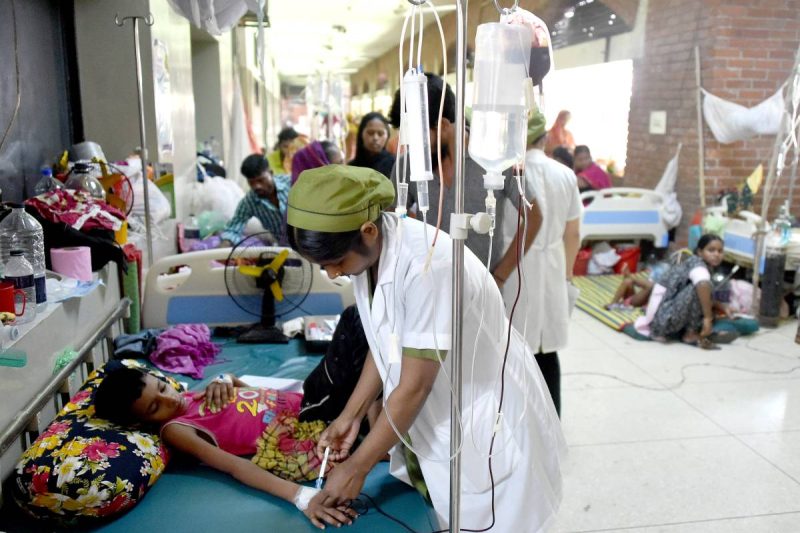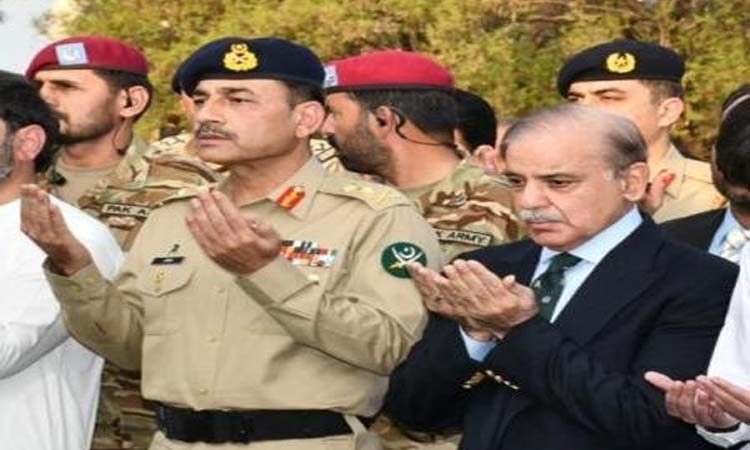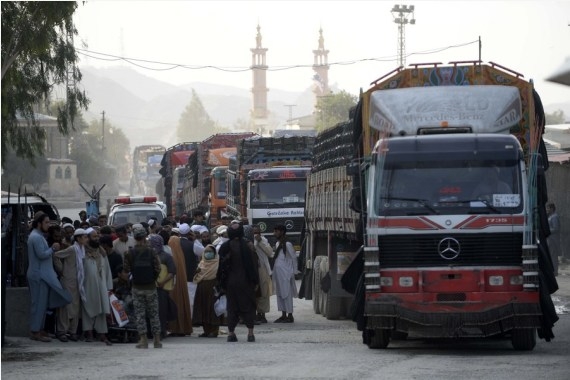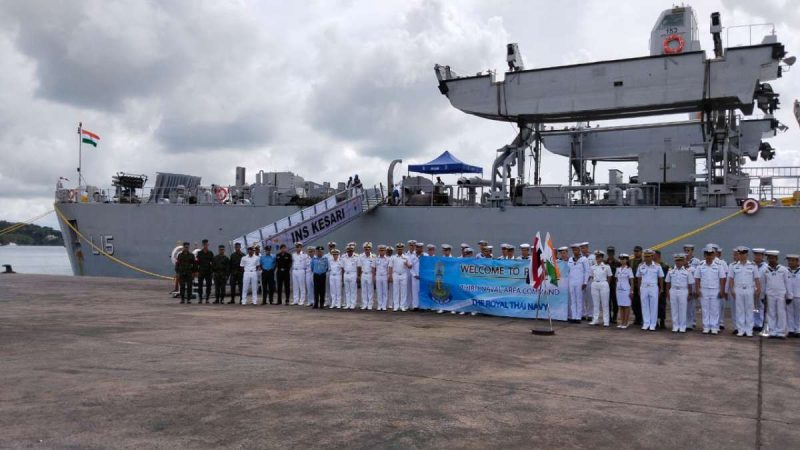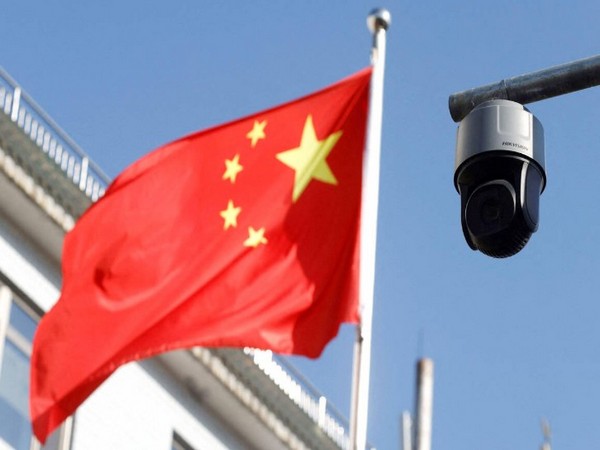It is likely that establishing a close bond between the incoming President of the US and the Prime Minister of India will be a priority for both Joe Biden and Narendra Modi…writes Prof. Madhav Nalapat

The “Namaste Trump” mela in Ahmedabad this year and earlier, the 2019 “Howdy Modi” hoopla in Houston, have been lampooned by many as sideshows. Such a view ignores the symbolism of both across the world. India has an economy far smaller than that of the United States (almost by ten times), and yet as the two leaders marched arm in arm across the stadium on both occasions, it was perceived by tens of millions of viewers that the Trump administration had finally accepted India as an equal, just as President Richard Nixon did with the People’s Republic of China in the 1970s. Nixon’s deft diplomacy created the defining alliance of the US during Cold War 1.0. This was not with the other members of NATO but with Beijing, and there grew an often understated, often covert, link between that capital and Washington. Similarly, the most consequential partnership between Washington and any other capital during Cold War 2.0 will be—as was acknowledged by then National Security Advisor H.R. McMaster in 2018—with Delhi. There has been much quibbling over whether what is taking place between the PRC and the US is indeed a “Cold War”. Those reluctant to admit that their serial predictions of the PRC turning democratic with economic success have doubled down on the strategy of engaging rather than confronting China. Such elements have long been part of the Biden policy ecosystem, hence the optimism in Beijing that spring is approaching after a Trumpian winter. The sizeable “Engage, don’t confront PRC” lobby in Washington has pointed out correctly that both sides seek to avoid a direct conflict but are silent about the fact that wars are not always started by design. A “Cold War” is not the opposite of a “hot” or kinetic war, but describes a situation wherein one superpower is seeking to wrest global leadership from the other by whatever means is available, and the other is seeking to repress its capabilities for doing so. Such a contest may be “hot” in some locations while remaining “cold” in others.

There has been a perception among policymakers, especially in Asia, that a Biden administration would return to the G-2 model favoured by Beijing (until it establishes a clear lead over the US). US tech companies, unhappy at having to decouple from their PRC partners and suppliers, have lavished money on the Democratic Party presidential campaign in the expectation that the decoupling from PRC-controlled supply chains that began in the final year of the Obama administration and was continued with more vigour under Donald J. Trump, will get reversed. They are likely to be disappointed, as PRC progress in Artificial Intelligence and in space and missile technology has begun to pose an existential threat to US military assets. As President of the US, Joe Biden will have access to data that show how the PRC has, for at least a decade, been working to separate its own tech supply chains from the US, and how it being the dominant component of so many US supply chains is assisting such a process. Neither Joe Biden nor Kamala Harris can be accused with accuracy of being “soft” on the PRC, unlike what has been alleged against them by the Republicans. Judging by some of the new entrants in the advisory councils of both, it is clear that both have transitioned from the Altanticist obsession of the Clintons to the Indo-Pacific pivot initiated by President Barack Obama, with the assistance of two outstanding intellects, Susan Rice and Ashton Carter.
However, President Obama was cautious to a fault in many ways, and standing up to China was included in that list. ASEAN countries factored in with dismay the non-response of the Obama administration when the Scarborough Shoals were taken over by the PRC from the Philippines in 2012 despite an agreement with Manila not to do so. The Pentagon’s policy has been the undertaking of symbolic passages by naval vessels through the South China Sea. Instead, what is needed (in conjunction with other powers) is to recover primacy over that crucial waterway through reversing the steady militarization of the South China Sea that has taken place under General Secretary Xi Jinping. This transformational leader has from the start of his rule in 2012 placed the PLA at the hub of diplomacy and strategy. The geographical activism that has taken place under Xi since 2012 resembles the manner in which there was accretion of territory by Chairman Mao, only this time mostly on water rather than land. What may be termed as neo-socialist (or neosoc) PRC analysts (who are as fixated on the expansion of Beijing’s power as the neo-conservatives or neocons were in the US were about boosting that of Washington) are gaining influence within the Chinese Communist Party (CCP). It is this group that is pushing for an aggressive PRC policy towards India. Their line has been adopted by the Central Military Commission (CMC) in the expectation that the effect of the Covid-19 pandemic on India has given an opportunity for the PLA to knock out any chances of Delhi emerging as a credible challenger to the PRC.

Once humiliating blows were landed, India would (in their view) lose its attraction as a potential ally to the US, and would itself begin a process of internal turmoil and eventual meltdown. This would in line with the objectives of GHQ Rawalpindi, a PLA ally. Simultaneously, the influence of Russia besides the PRC’s own lobby within India would prevent the Narendra Modi government from going ahead with an Indo-US partnership, on the specious ground that by doing so, the “independence” and “strategic autonomy” of India would be compromised. Both are indeed being sought to be compromised, not by those in favour of a defence and security alignment with the US, but because of the activities of the PLA and GHQ Rawalpindi. Both are working in tandem where India is concerned. PRC “neosoc” (neo-socialist) analysts expect the Biden administration to seek a return to the G-2 model in Asia. Should they be correct, US credibility as a security partner for Southeast Asia would fall to depths not seen since the 1930s.
AGGRESIVE NEO-SOCIALISTS
The nationalistic (or in their words, patriotic) neosoc analysts in China believe that the Biden administration will move away from the Indo-Pacific strategy fashioned during the Trump presidency. This would be at the precise time when the Quad needs to expand its potentiality through the association of Vietnam and Indonesia. The latter country contains the only waterway through which nuclear submarines can transit from the Pacific to the Indian Ocean, besides having the largest Muslim population in the world, followed by Pakistan and India. There was a similar burst of optimism in Chinese Communist Party (CCP) think-tanks when Donald Trump was sworn in on 20 January 2017. The 45th President of the US was after all a businessman, and the CCP has been expert in the handling of business entities, which is why to this day, Big Tech in the US remains hostile to the Pompeo-Esper hard line on China. They would prefer that Huawei and other PRC entities continue to service their needs, even if in the process US tech giants are themselves are at risk of getting overtaken in global markets by business champions nurtured by the CCP.
The declaration of President Trump’s 2017 trade war with China was regarded by them as simply a negotiating tactic to get more concessions. It was only after several months that the “neosocs” understood that at least under Trump the era of the US facilitating the expansion of PRC businesses and markets was over. Given the fact that not only Republicans but Democrats share apprehensions about the direction the PRC is taking, it is unlikely that even the many Atlanticists in a Biden administration would be able to resist the growing number of voices within the Pentagon, the National Security Council and even the State Department that regard the Indo-Pacific rather than the Atlantic as the centre of gravity in global geopolitics. Such a pivot implies that it is the PRC that is the principal foe, and no longer Russia, which under Vladimir Putin has now moved into the role of being an indispensable (and therefore quasi-equal) partner of the PRC. The Sino-Russian alliance is a formidable construct that has the potential to establish a unipolar Asia before moving on to the creation of a unipolar world. At the same time, as Beijing establishes itself as the dominant power in Asia, Moscow would once again expand its footprint in Europe, especially in those European states that were once part of COMECON. Should an Indo-US security and defence partnership become operational, this would pose a significant obstacle to such plans, which is why both Moscow and Beijing (not to mention Islamabad) are opposed to the idea of a US-India partnership.

The signing of the final foundation agreement (BECA) between the US and India has shown that the influence of Moscow on decisions in Delhi is finally declining. It is a sign of the influence of Moscow within the Ministry of Defence that when the PLA intruded yet again (and in a strength not seen since 1962) into Indian territory in May, rather than purchase US weapons platforms, once again bulk orders were placed with Moscow. These were of items with which the PLA is very familiar. It was when US equipment made a substantial difference to the fighting capabilities of the Army and the Air Force in their recent confronting of the PLA challenge that the importance of turning to a rival rather than to an ally of China for crucial military supplies became more apparent within the Lutyens Zone. Despite not having met or even talked to Candidate Trump until he became President Trump, Prime Minister Narendra Modi was quick off the mark in establishing as close a relationship with the 45th President of the US as he was with Barack Obama. It is likely that establishing a close bond between the incoming President of the US and the Prime Minister of India will be a priority for both Biden as well as Modi. Such closeness will be opposed in India by those political parties who remain as wedded to the USSR-US Cold war 1.0 strategies as hardcore Atlanticists in the US cling on to illusions that the realities that took shape after the 1939-45 war have not been overtaken by the emergence of the Indo-Pacific century, or that it is no longer Moscow but Beijing that is the primary challenge to Washington.
The Democratic Party has been unlucky in the loss while in office of Franklin Delano Roosevelt and John Fitzgerald Kennedy. Both understood the importance of the change that was accelerating in Asia and Africa. Had Roosevelt been in office for the whole of his final term, many of the wars and miscalculations that followed would have been avoided. Had Kennedy lived to win a second term, the India-US relationship would have blossomed into a partnership. President Clinton had no time for India except in the matter of demolishing its nuclear and missile deterrent against the PRC, which he indulged in terms of policy even while objecting to some of its actions in words. Even in his last-minute visit to India, President Clinton made sure to visit Pakistan as well, thereby underlining the hyphenation of the two countries that was a staple of US foreign policy from the time of President Eisenhower. It took President George W. Bush to accept the reality of India as a responsible nuclear weapons state, and also to open the door to the world’s largest democracy becoming the manufactory of 90% of the life-preserving drugs that ensured that HIV (AIDS) ceased to be a death sentence for the poor across the globe.

The incoming US President needs to similarly turn to India if he is to ensure that the poor in his country get affordable access to the medications needed to mitigate the effects of Covid-19. This would be still more relevant in a situation where a vaccine remains distant. The Clinton, Obama and Trump administrations took the side of Big Pharma against their own poor and their own budgets, working overtime to shut the door on cheaper generics from India. US Trade Representative Robert Lighthizer would be welcomed by Big Pharma as a well-paid lobbyist, so relentless has been his effort to get India to change its laws and practices so as to weaken its generics industry and to ensure that patents for Big Pharma drugs get indefinitely extended through legerdemain rather than any genuine change in the effectiveness of the high-priced medication whose patent is getting extended. Someday, the human rights lobby will become active in the matter of the tens of millions of poor who have died or suffered agony because access to low-cost and equally effective medications from India was blocked by their lobbying.
FORMING A TECHNO TRIANGLE
The US, India, Japan and Australia have formed the Indo-Pacific Quadrilateral Alliance, and this is a legacy that the 46th President of the US is likely to not just continue with, but strengthen. Contrary to the dissemination of perceptions that he is an apologist for the PRC, Joe Biden is known to be focused on the US interest. In such a context, the chances are high that the signing of the defence and security Foundation Agreements (one under Barack Obama and two under Donald Trump, all cleared during the period in office of Prime Minister Narendra Modi) will clear the way for major defence manufacturers in the US to set up segments of their production facilities in India, so that they can more effectively compete in costs with the competition that will soon come their way from the Sino-Russian alliance. Care needs to be taken by the Government of India to ensure that 100% ownership be permitted in defence rather than 75%. There is no reason why India should not permit full ownership for entities in partner countries in the defence production sector, especially in a situation where nearly 80% of core defence equipment is sourced from outside the country. Care needs to be taken to ensure that only companies that are based in friendly countries are allowed to enter into production, while those from countries with which there are tensions which could escalate, need to be kept out, as also those from countries that have a close military and security relationship with foes of India.

A similar welcome can be extended to US tech companies so that they source production not in the PRC but in the other country with a billion-plus population, India. The obsession of then Vice-President Dick Cheney with the domestic sourcing of items needed in the wars he helped begin together with President George W. Bush pushed up costs and was among the reasons why the economy of the country tanked during the final year (2008) of the 43rd President of the US. Value addition by the US to a proportion of components made elsewhere makes more sense than seeking to source the entire downstream production of items in the US in the manner that President Trump frequently announces as his goal. A possible winner would be the setting up of a Techno Triangle involving the US, India and Taiwan. This could evolve into a significant partnership in a context in which tech companies from both the US as well as Taiwan have begun a process of decoupling from the PRC. Tweaks in policy, such as permitting higher-level visits between Taipei and Delhi, would facilitate the process of relocation of Taiwanese manufacturing and other supply chains from the PRC to India. Just as there were advantages to locating production facilities in the PRC during 1981-96, there are significant advantages to locating in India. This would especially be the case once Prime Minister Modi goes ahead with simplifying and compressing administrative procedures and making them more transparent. Much has been achieved in this direction during the Covid-19 pandemic, but several more reforms need to follow to ensure that India becomes a global manufacturing hub in the manner that the PRC became during the years when Paramount Leader Deng Xiaoping was leading that country.
INDIA’S DAUGHTER
Incoming Vice-President of the United States, Kamala Devi Harris, was brought up by her mother, who had deep roots in India. She is no Bobby Jindal, seeking to cover up both ethnicity and identity. Her Vice-Presidential visit to Tamil Nadu via Delhi will be an event that will generate a festive atmosphere in that state. Both she as well as her husband Doug and her “manas putri” Ella and “manas putra” Cole would love such a visit to the country that Kamala’s mother called home. There have been posters in Tamil Nadu celebrating the California politician’s ascent in politics and prayers in multiple locations were held for her success in the 3 November polls, which seem to have been answered. Coming from a state where Indian-Americans are ubiquitous, it is surprising to come across numerous social media posts asserting the proposition that the first term Senator did not identify with the country from where her mother hailed from.

Kamala Harris also has roots in Jamaica, a country that has some of the friendliest people on the planet, but overall she is—like other citizens in her country of multiple ethnicities—quintessentially from the country where she was born in and which she has from her childhood considered as home. A country that has elected her as the fist woman Vice-President of the US, and the first non-white to hold that post. A country that is finally moving towards a partnership with India, a bonding that ought to have taken place decades ago but somehow eluded policymakers on both sides, although the people of both countries have formed a dense network of relationships, including in business, health and education. Just as Mike Pence has been an effective second-in-command to President Trump, so will be Vice-President Kamala Harris to President Joe Biden. Even after they step down, Donald Trump and Mike Pence will be welcome in India anytime. Pence, in particular, has distinguished himself through a clear view on global geopolitics that understands the stark reality of the situation that is confronting the US in the shape of Cold War 2.0.
Just as President Roosevelt and Prime Minister Churchill signed the Atlantic Charter, the need has arrived for President Biden and Prime Minister Modi to sign the Indo-Pacific Charter. This would enshrine the centrality of preventing aggression by predatory powers in the Indo-Pacific, and serve as a framework for cooperation on the basis of agreed principles. It would energize and give heart to ASEAN and further stabilize South Asia minus a particular country that its military has tethered to the PLA. Donald Trump has been a success where India-US ties are concerned. President Barack Obama established a legacy of trust together with PM Modi. This has been carried forward in a robust manner by his successor Donald Trump, unlike almost all the other signature policies of the 44rth President of the US. Rather than result in a rollback, the odds are that the period in office of the incoming President and Vice-President of the US will ensure an even closer partnership between the two biggest democracies. Such a pairing is essential in an era when the values both believe in are under threat.








